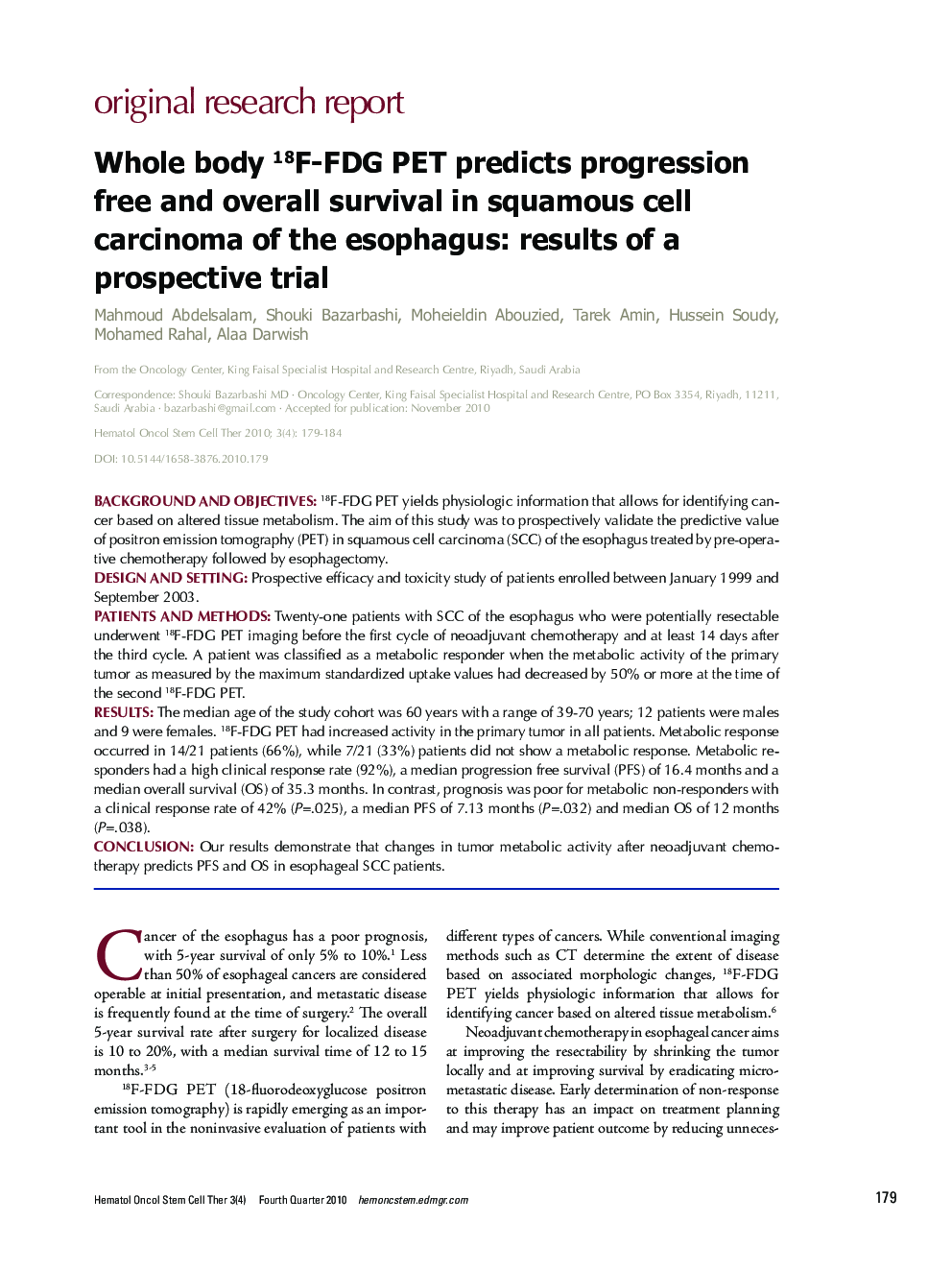| Article ID | Journal | Published Year | Pages | File Type |
|---|---|---|---|---|
| 2135953 | Hematology/Oncology and Stem Cell Therapy | 2010 | 6 Pages |
BACKGROUND AND OBJECTIVES18F-FDG PET yields physiologic information that allows for identifying cancer based on altered tissue metabolism. The aim of this study was to prospectively validate the predictive value of positron emission tomography (PET) in squamous cell carcinoma (SCC) of the esophagus treated by pre-operative chemotherapy followed by esophagectomy.DESIGN AND SETTINGProspective efficacy and toxicity study of patients enrolled between January 1999 and September 2003.PATIENTS AND METHODSTwenty-one patients with SCC of the esophagus who were potentially resectable underwent 18F-FD G PET imaging before the first cycle of neoadjuvant chemotherapy and at least 14 days after the third cycle. A patient was classified as a metabolic responder when the metabolic activity of the primary tumor as measured by the maximum standardized uptake values had decreased by 50% or more at the time of the second 18F-FDG PET.RESULTSThe median age of the study cohort was 60 years with a range of 39-70 years; 12 patients were males and 9 were females. 18F-FD G PET had increased activity in the primary tumor in all patients. Metabolic response occurred in 14/21 patients (66%), while 7/21 (33%) patients did not show a metabolic response. Metabolic ressponders had a high clinical response rate (92%), a median progression free survival (PFS) of 16.4 months and a median overall survival (OS) of 35.3 months. In contrast, prognosis was poor for metabolic non-responders with a clinical response rate of 42% (P = .025), a median PFS of 7.13 months (P = .032) and median OS of 12 months (P = .038).CONCLUSIONOur results demonstrate that changes in tumor metabolic activity after neoadjuvant chemo-therapy predicts PFS and OS in esophageal SCC patients.
